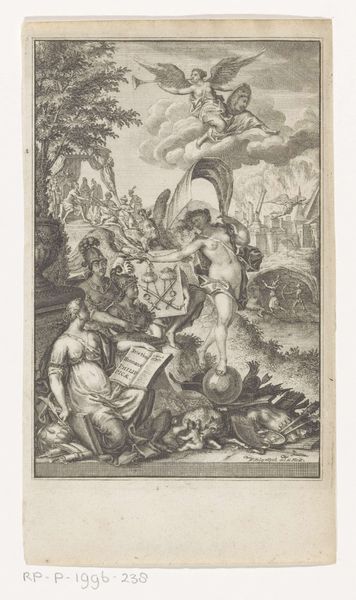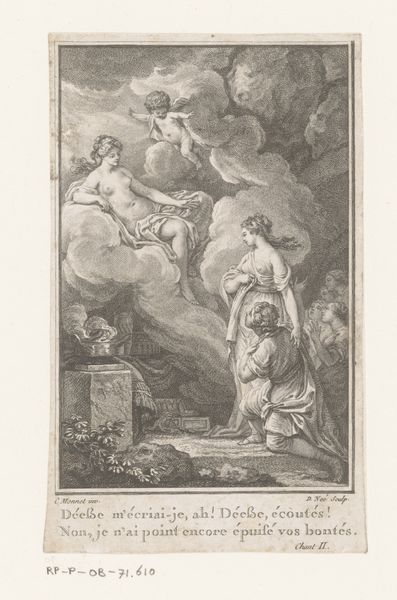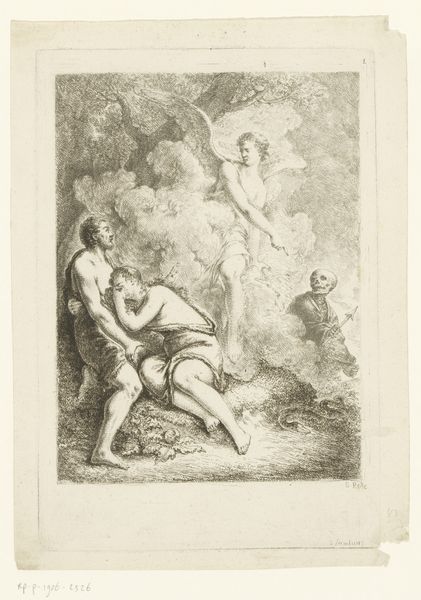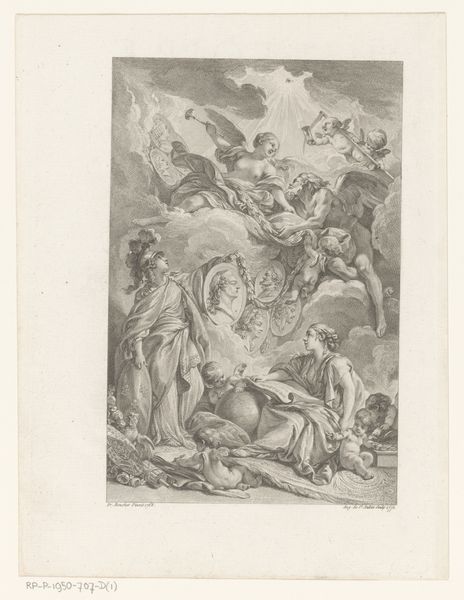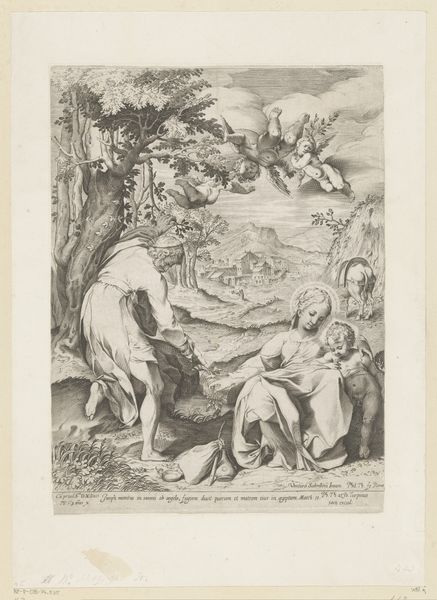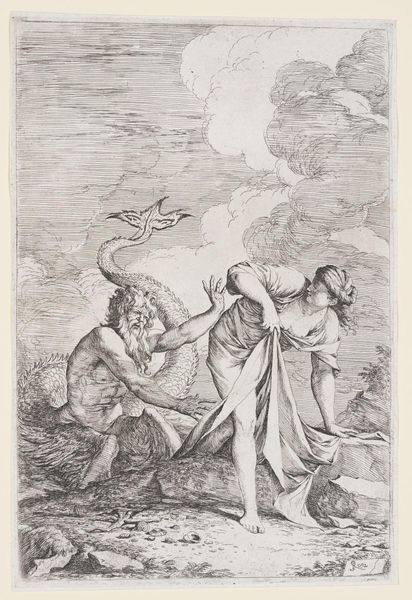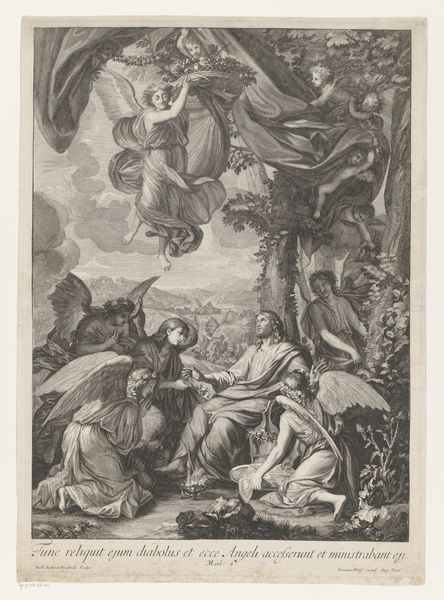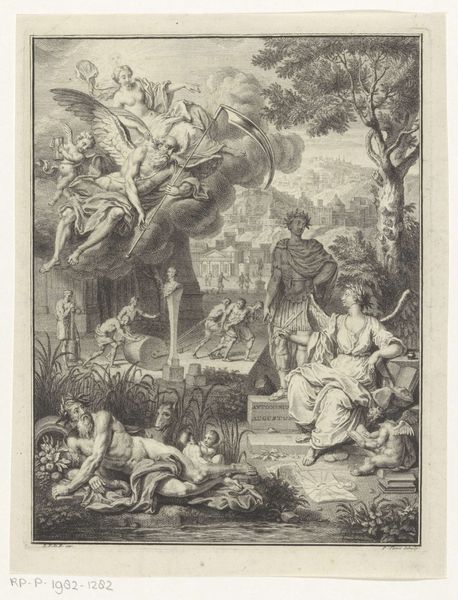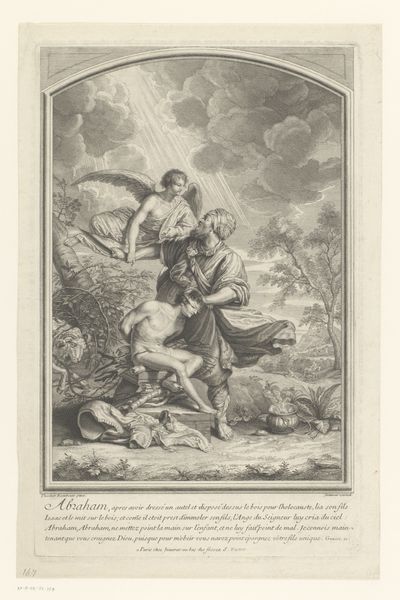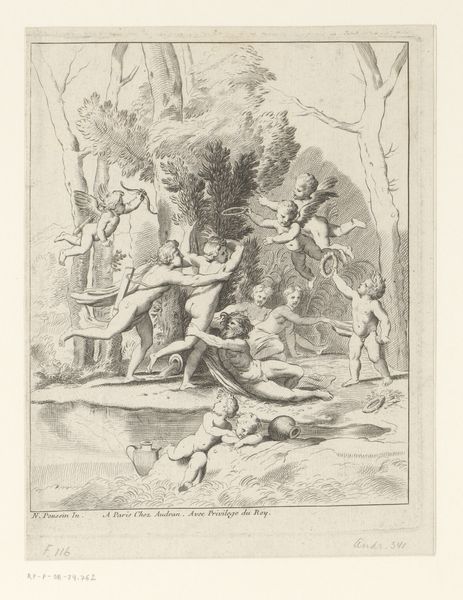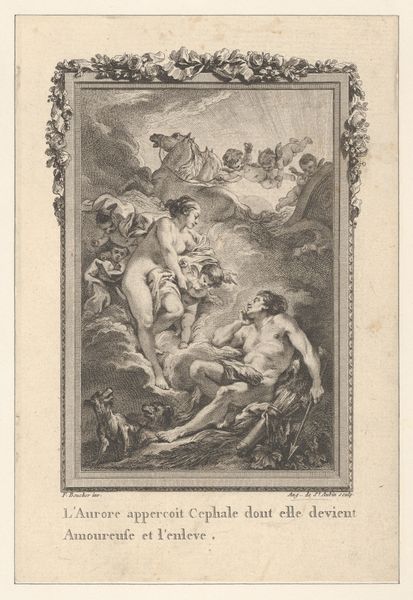
print, engraving
#
pencil drawn
#
light pencil work
#
narrative-art
#
ink paper printed
# print
#
pencil sketch
#
old engraving style
#
figuration
#
line
#
pencil work
#
history-painting
#
engraving
Dimensions: height 166 mm, width 106 mm
Copyright: Rijks Museum: Open Domain
Editor: This print, "Balders Dood" by Daniel Nikolaus Chodowiecki, dates from 1784 and is currently housed at the Rijksmuseum. The scene is so evocative - you've got Balder, dead on the ground, and figures of grief all around. What do you see when you look at this piece? Curator: Beyond the immediate drama, I see a visual manifestation of a changing socio-political landscape. Chodowiecki was working in a period of increasing interest in Germanic mythology, fueled by a burgeoning sense of national identity. Consider how the revival of these myths, through art like this, contributed to a cultural narrative that emphasized shared heritage and values. How do you think this image would be received by different social classes at the time? Editor: I suppose the educated classes would "get" it more, since they would already have been exposed to the myths and allegories from their education. Curator: Precisely. The print, by being widely accessible as an engraving, aimed to disseminate these narratives beyond the elite. This democratization of imagery is a crucial element of the Enlightenment, aiming to instruct and shape public morality. Think about the specific elements of the composition. The idealized figures, the clear narrative, even the relatively restrained emotion, speak to a desire for order and rationality. Do you agree? Editor: I do. I didn’t initially notice how calculated the expressions seem. More staged somehow than truly emotional. Curator: And that "staging," if you will, reflects the print's function as a vehicle for moral instruction within the cultural climate. The story itself - the death of innocence through treachery - serves as a potent allegory. Where does the role of publishers come in when framing a socio-historical understanding of the artwork? Editor: Right, since they would want the engravings that are politically palatable, that reinforces particular socio-political messages. This really broadens how I understand prints! Curator: Exactly. It shows the art world as more than just about individual artistry; it highlights how interwoven it is with social power and the formation of public opinion.
Comments
No comments
Be the first to comment and join the conversation on the ultimate creative platform.
